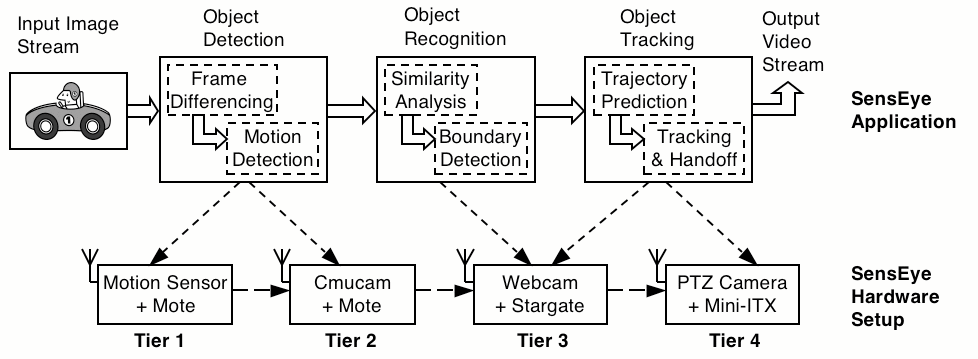

Purushottam Kulkarni, Deepak Ganesan, Prashant Shenoy and Qifeng Lu, SensEye: A Multi-tier Camera Sensor Network, Proceedings of ACM Multimedia, 2005. Nominated for Best Student Paper Award
Purushottam Kulkarni, Deepak Ganesan and Prashant Shenoy, The Case for Multi-tier Camera Sensor Networks, Proceedings of the Fifteenth International Workshop on Network and Operating Systems Support for Digital Audio and Video (NOSSDAV), 2005